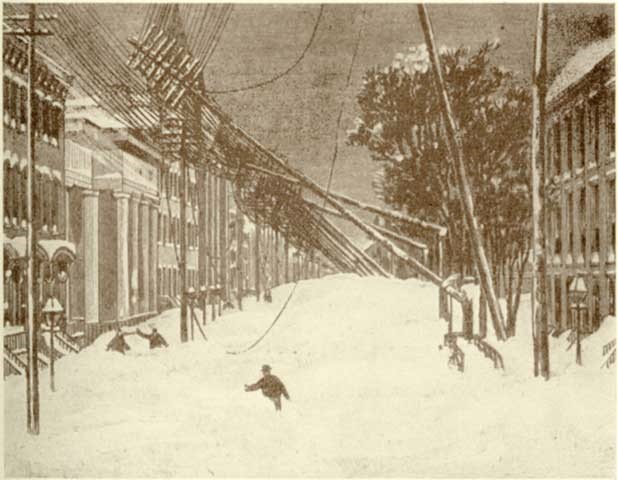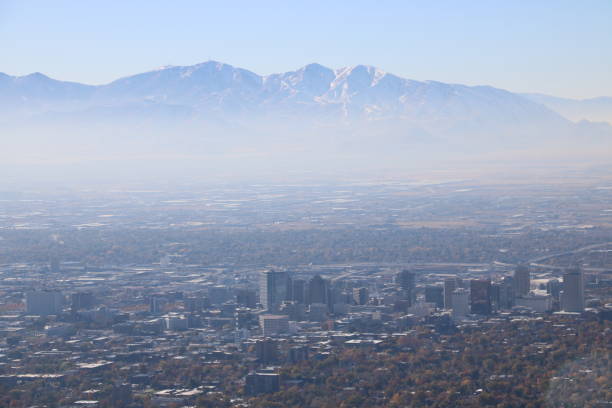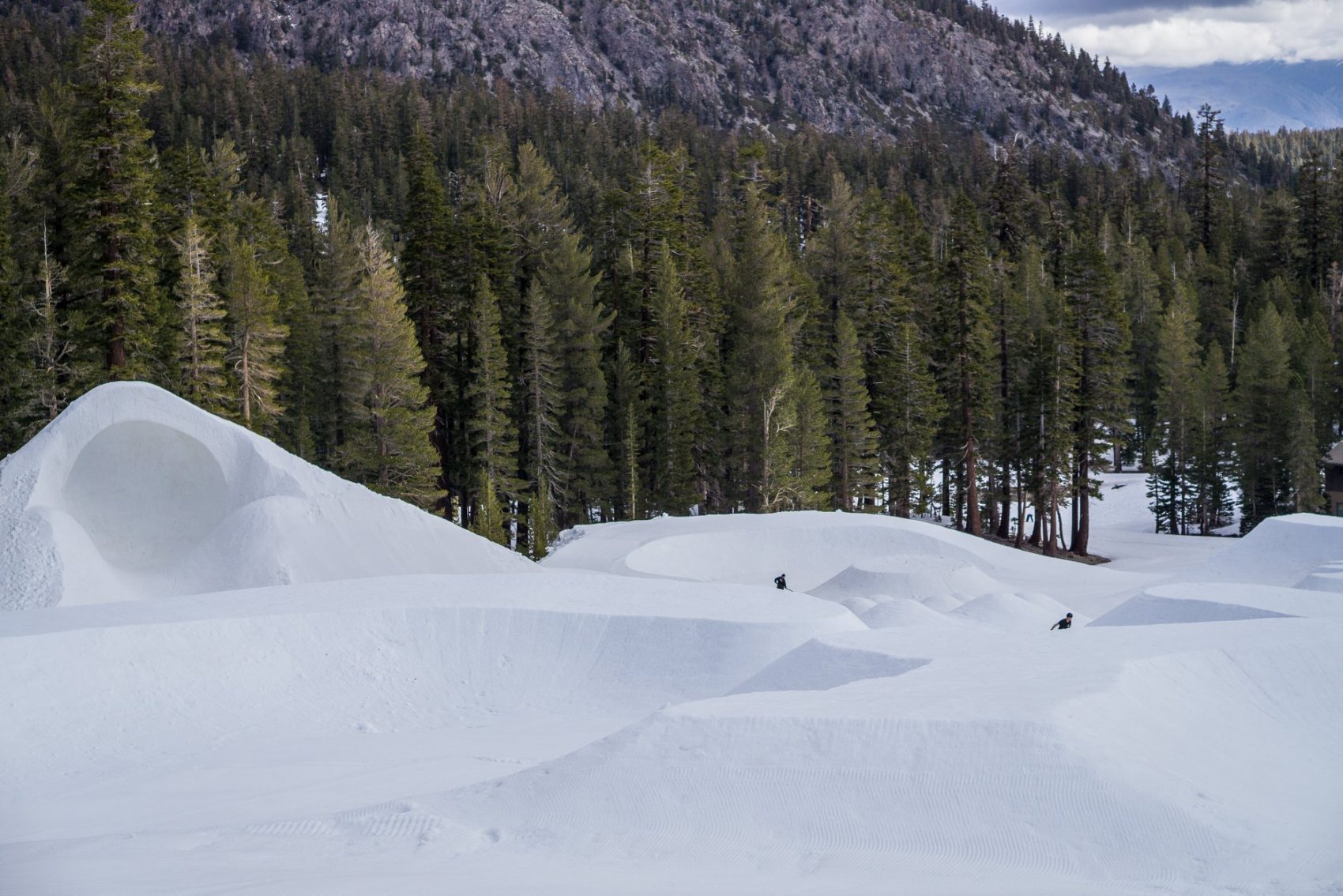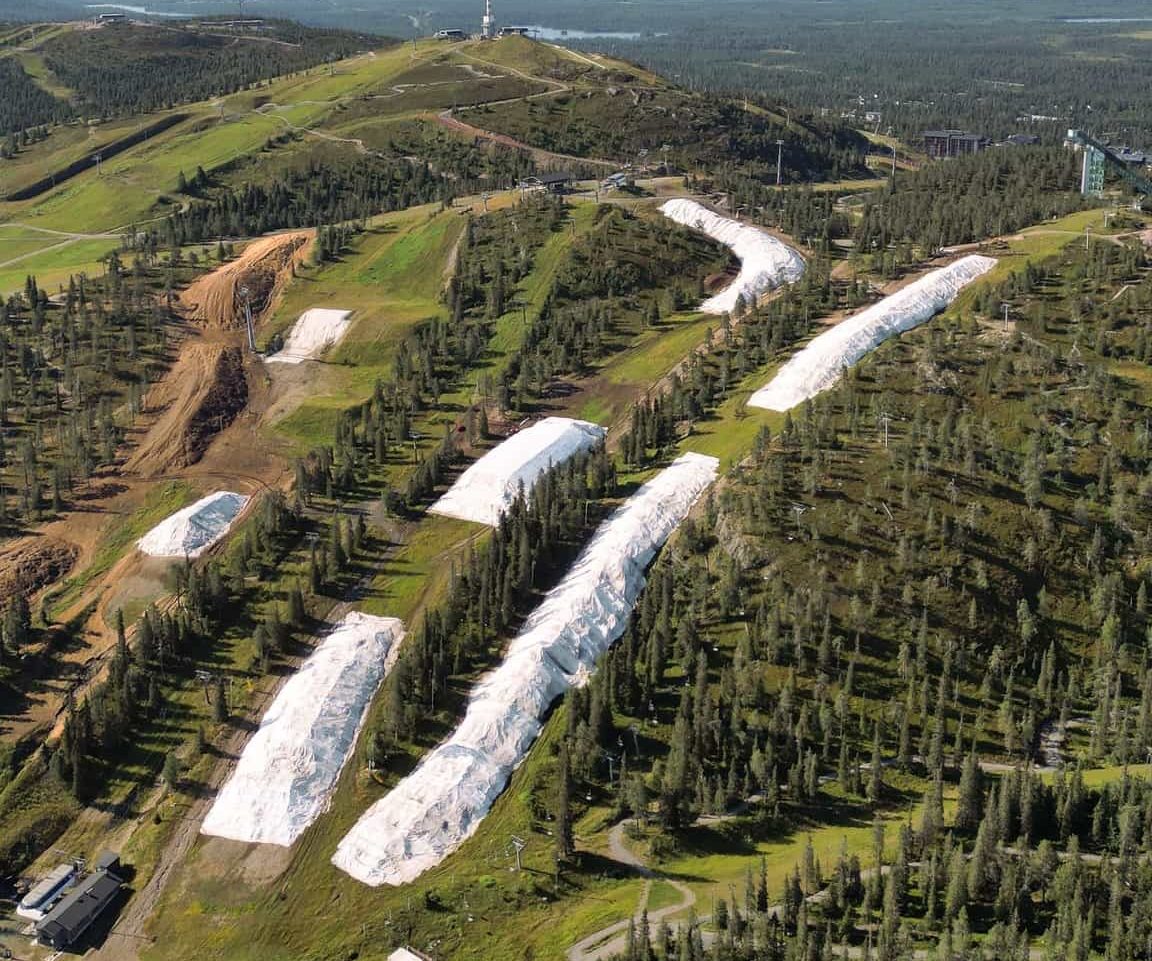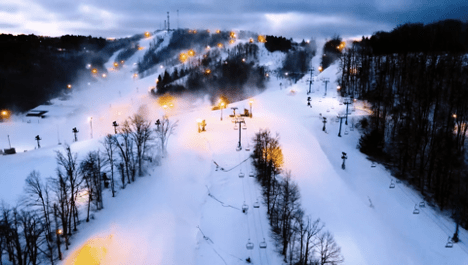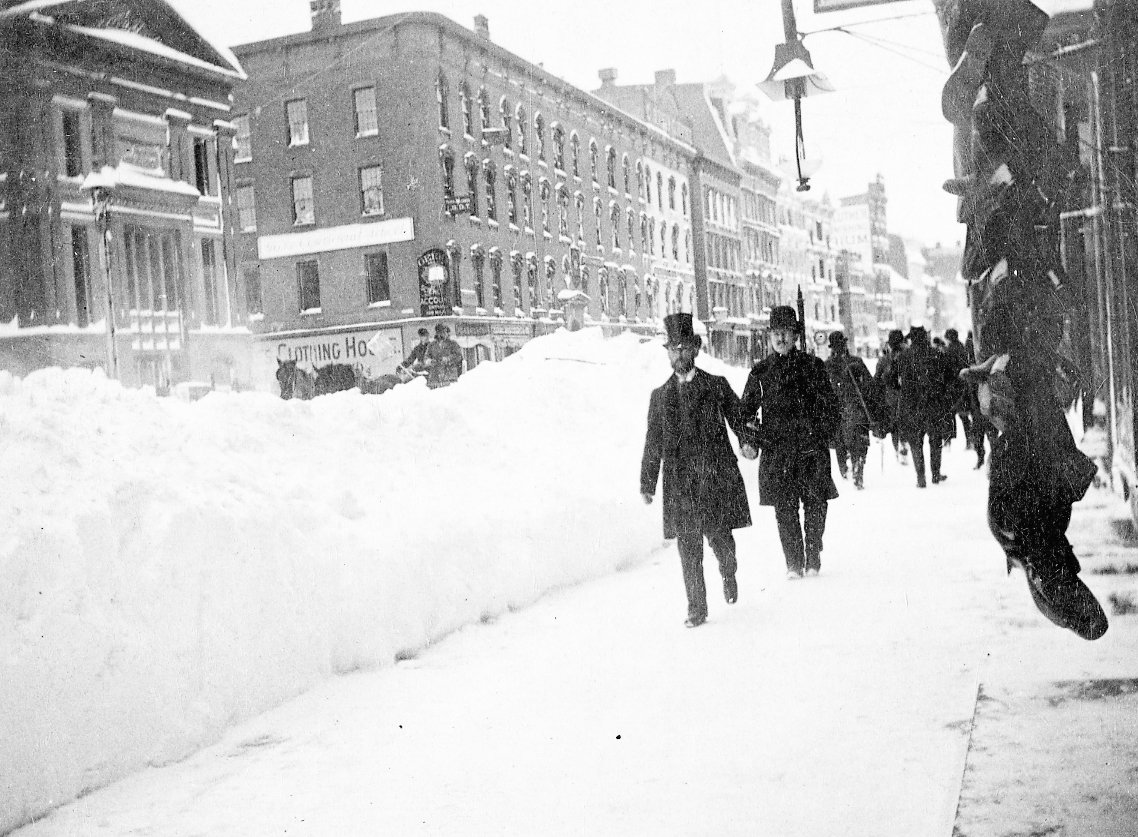
The Great Blizzard of 1888 killed over 400 Americans and caused at least $20,000,000 in damages. On March 11, 1888, snow began falling, temperatures dropped, and wind speeds exponentially increased across the East Coast. New York, New Hampshire, Connecticut, and Maine were the most affected areas which received up to 55 inches of snow and wind speeds of up to 85 mph. Wind-blown areas even had drifts of snow that reached up to 50 feet high, which was enough to “immobilize New York, Boston, and other major cities, blocking roads and wiping out telephone, telegraph, and rail service for several days.”
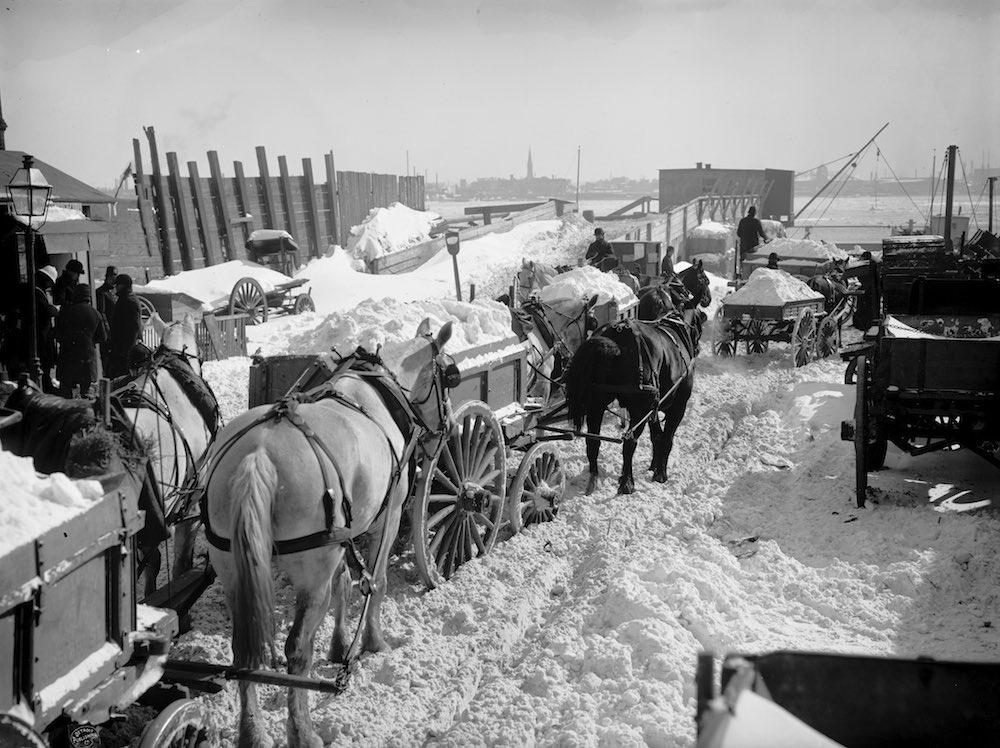
“After a stretch of rainy but unseasonably mild weather, temperatures plunged, and vicious winds kicked up.” The treacherous conditions created by this blizzard were set off when an Artic cold front coming from Canada met warm air coming from the Gulf Coast. “Rain turned to snow, and winds reached hurricane-strength levels.” In certain areas, 10+ inches of snow fell per night for up to three days straight. Given the lack of modern technology, the weather quickly became unbearable and has been remembered as the deadliest blizzard in U.S. history.
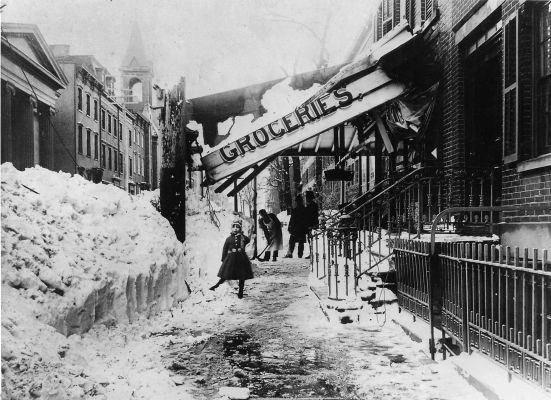
The Great Blizzard of ’88 essentially shut down the East Coast for around a week; even Wall Street Stock Exchange businesses had to close down. At least 15,000 people were stuck on trains, hundreds of boats sank, and New Yorkers camped in hotel lobbies hoping the storm would pass. People actually started selling their help, arriving at the trains with shovels and ladders attempting to empty the trains of the blizzard’s hostages. Similarly, the East River, which connects Manhattan and Queens, completely froze over and many attempted to cross; however, many were very unlucky and did not make it. In New York City alone, there were over 200 deaths, and the infrastructure of electricity, gas, and buildings had to be completely revamped to withstand these types of storms in the future. The Great Blizzard of 1888 made Americans aware of the dangers of blizzards, especially because “at the time, approximately one in every four Americans lived in the area between Washington, D.C., and Maine,” where the blizzard occurred.
In the United States, the second most deadly blizzard did not occur for more than 40 years after The Great Blizzard, in 1922, and there were only around 25% as many casualties. “The [Great] blizzard’s impact was so great that, until 1969, survivors met to commemorate the storm’s anniversary.” Every few years, the East Coast is ravaged by a massive snowstorm or blizzard. Still, The Great Blizzard is by far the worst in the history of the U.S. and should help to put in perspective how dangerous blizzards can truly be and how lucky the country is to have never relived the Great Blizzard again.
